Custom Manufacturing Welding Neck Titanium Flange Services
Welding-Neck-Titanium Flange has become a star product in the fields of chemical industry, aerospace, marine engineering, etc. with its unique structural design and material advantages. Its long neck structure can effectively disperse stress, reduce fatigue damage at the weld, and extend service life.
- JIS
- ANSI
- ISO 9001:2015
- ISO13485:2016
- Flat (FF) Sealing Surface
- Raised Face (RF) Sealing Surface
- Tongue and Groove Sealing Surface
- Concave and Convex Sealing Surface
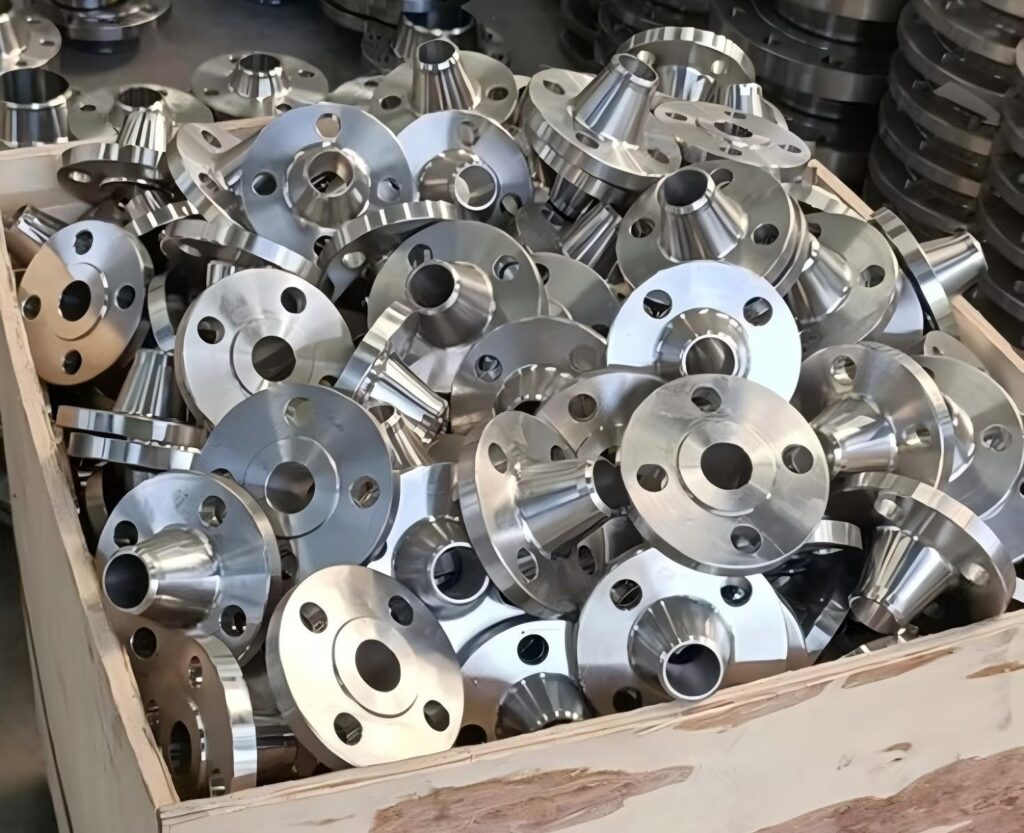
Welding Neck Titanium Flange Factory-Wstitanium
Welding-Neck-Flange (WN flange) is a type of flange that is connected to the pipeline by butt welding. Its unique long tapered neck design effectively disperses pipeline stress and reduces stress concentration at the connection, thereby improving the strength and sealing of the overall structure. Compared with flat welding flange (PL) or socket welding flange (SW), WN flange has higher pressure bearing capacity and fatigue resistance, and is suitable for complex working conditions with high pressure, high temperature, corrosive media and frequent vibration. With its precise geometric design and high-quality materials, Wstitanium is committed to manufacturing high-quality Welding-Neck-Titanium-Flange, providing customized solutions for high-risk environments such as petroleum, chemical, and energy, to meet the requirements of maintaining stable performance of pipelines under harsh conditions.
Customized Welding Neck Titanium Flange Materials
Materials are the basis of titanium flange performance. Wstitanium strictly follows the ASTM B381 standard, selects Grade 2, Grade 5 and other titanium alloy grades, and achieves precise control of material properties through composition control and heat treatment processes. Each batch of titanium materials passes spectral analysis (ASTM E357) and ultrasonic flaw detection (ASTM E797) to ensure that the chemical composition and internal structure are free of defects. The manufactured titanium flanges pass grain size testing (ASTM E112) and hardness testing (ASTM E10), and are accompanied by material certificates (MTR) and third-party certifications (such as ASME BPVC Section II).
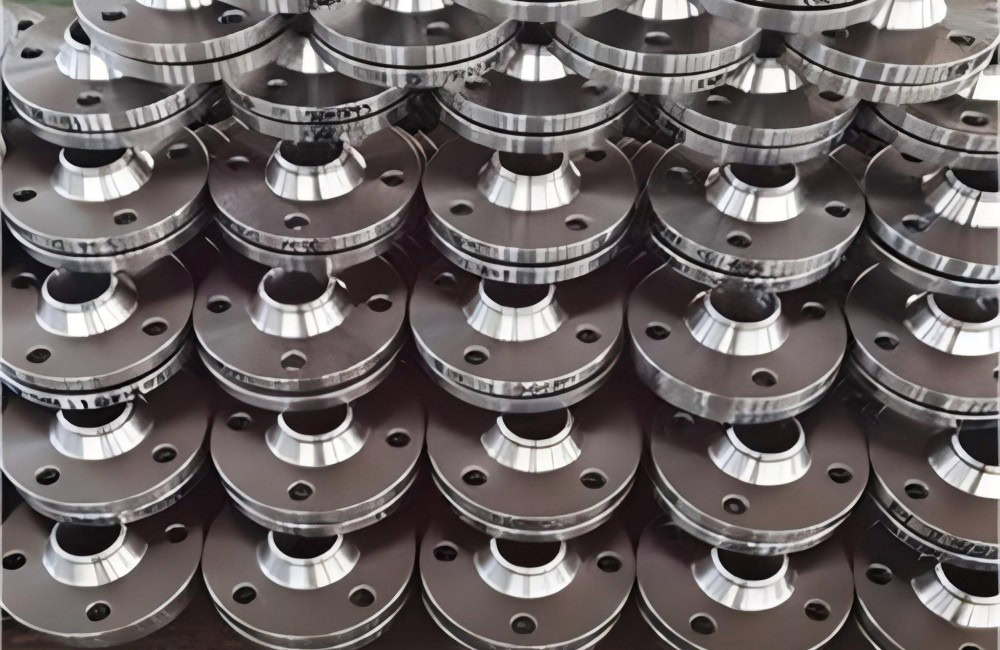
- Gr1 (pure titanium)
Gr1 has a titanium content of ≥99.5%, low strength (yield strength ≥170MPa), but excellent ductility (elongation 24%). It is resistant to seawater and nitric acid corrosion and has good weldability. It is suitable for normal pressure or low pressure environments (≤200bar), such as food machinery, ship condensers and seawater desalination equipment.

- Gr2 (pure titanium)
Gr2 has better strength (yield strength ≥240MPa) and corrosion resistance than Gr1, and an elongation of 20%. It is widely used in the petrochemical, papermaking and pharmaceutical industries, especially suitable for chloride ion media (such as brine, bleaching liquid). It is suitable for safe connection of medium-pressure pipelines (≤400bar).
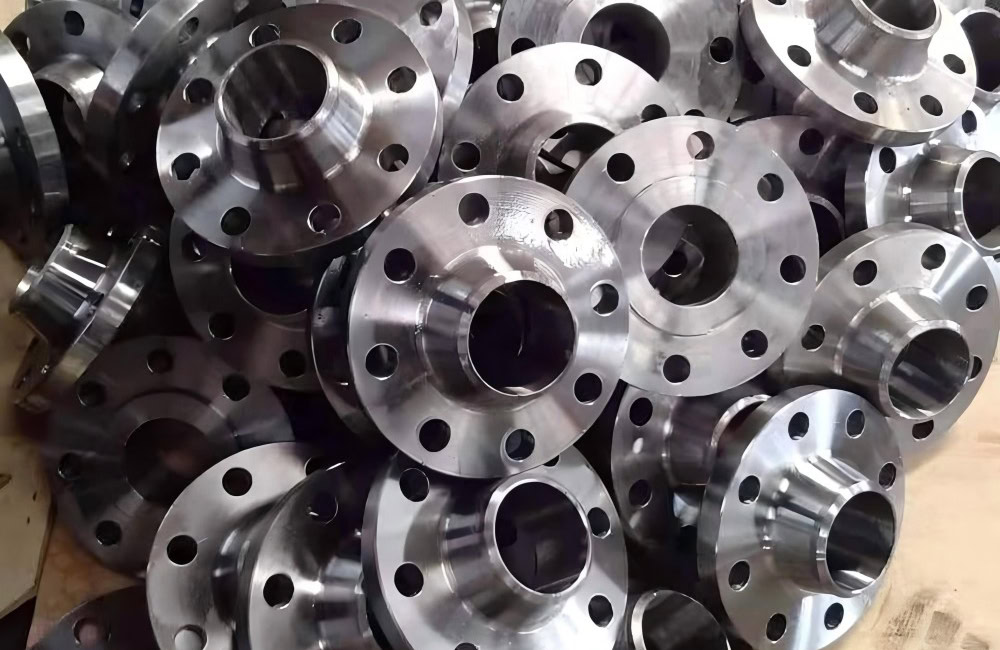
- Gr3 (pure titanium)
Gr3 has a yield strength of ≥310MPa, high hardness and outstanding wear resistance. It is suitable for corrosive media containing solid particles, such as slurry transportation and sewage treatment systems. Its neck structure can withstand a certain vibration load and ensure connection stability in metallurgical and mining equipment.
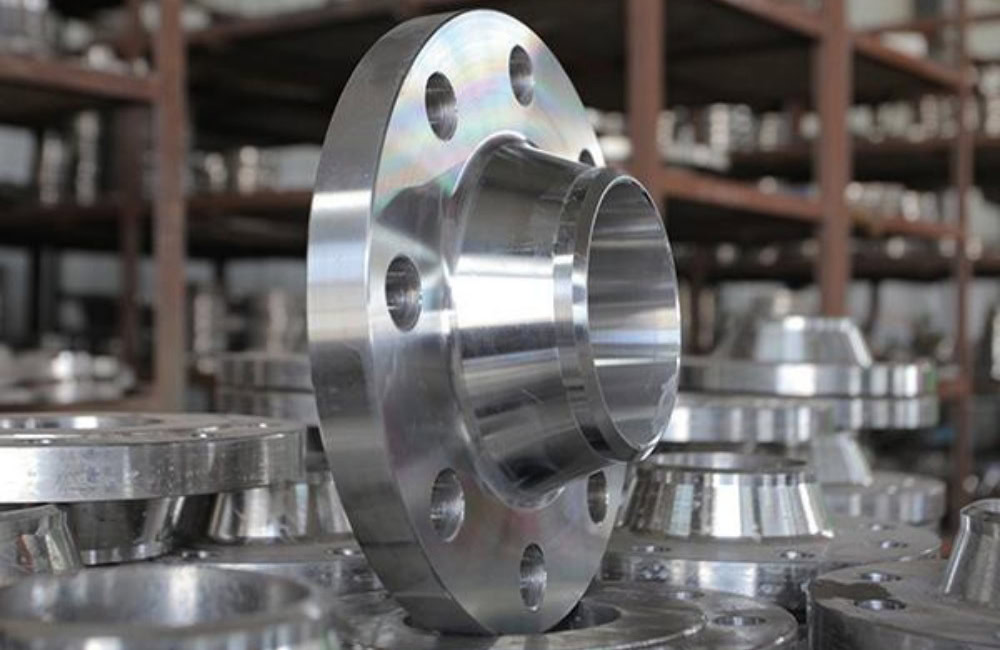
- Gr4 (pure titanium)
Gr4 is high-strength pure titanium (yield strength ≥ 380MPa), with both corrosion resistance and fatigue resistance. Suitable for high-pressure conditions (≤ 600bar), such as chemical reactors and high-pressure heat exchangers. It has good weldability and its comprehensive performance can be optimized through heat treatment.
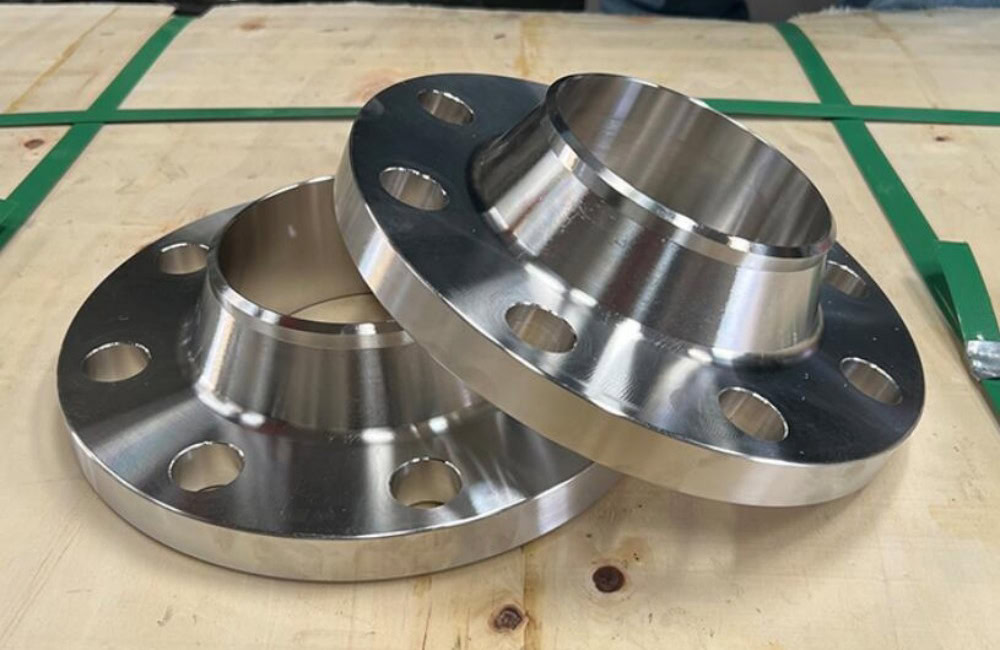
- Gr5 (Ti-6Al-4V)
Gr5 contains 6% Al and 4% V, with high strength (yield strength ≥ 825MPa), high temperature resistance (≤ 600℃), and resistance to seawater and chloride corrosion. It is widely used in aerospace and nuclear power, such as aircraft fuel pipelines and nuclear reactor cooling systems, and can withstand extreme pressures and temperatures.
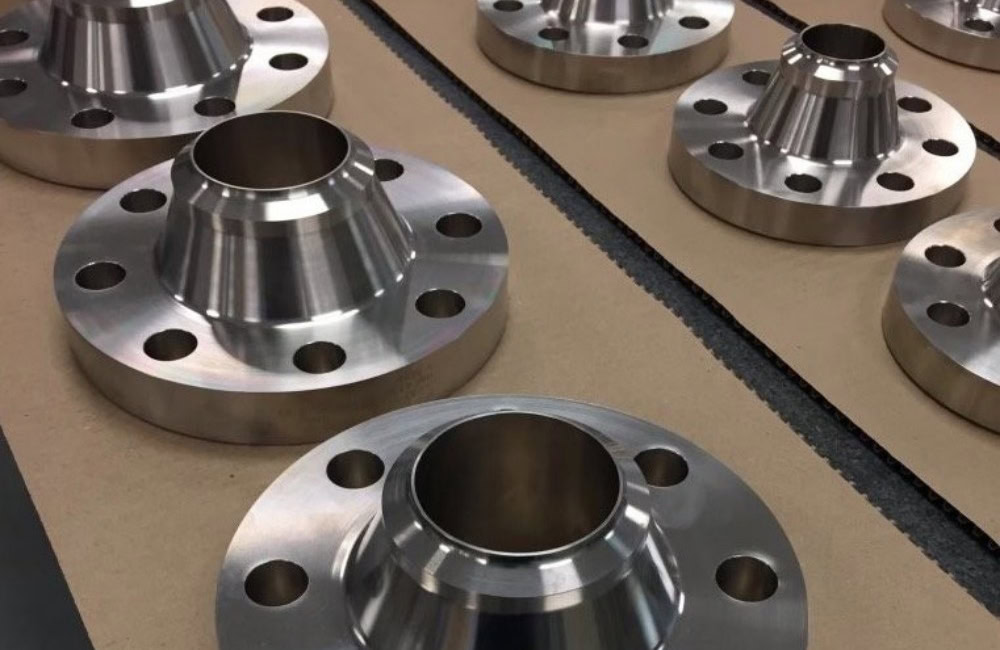
- Gr7 (Ti-0.15Pd)
Gr7 adds 0.15% palladium, which significantly improves the resistance to crevice corrosion and pitting corrosion, especially resistance to hydrochloric acid and sulfuric acid. It is suitable for highly corrosive media (such as organic acids) in the chemical and pharmaceutical industries to ensure sealing and durability in harsh environments.
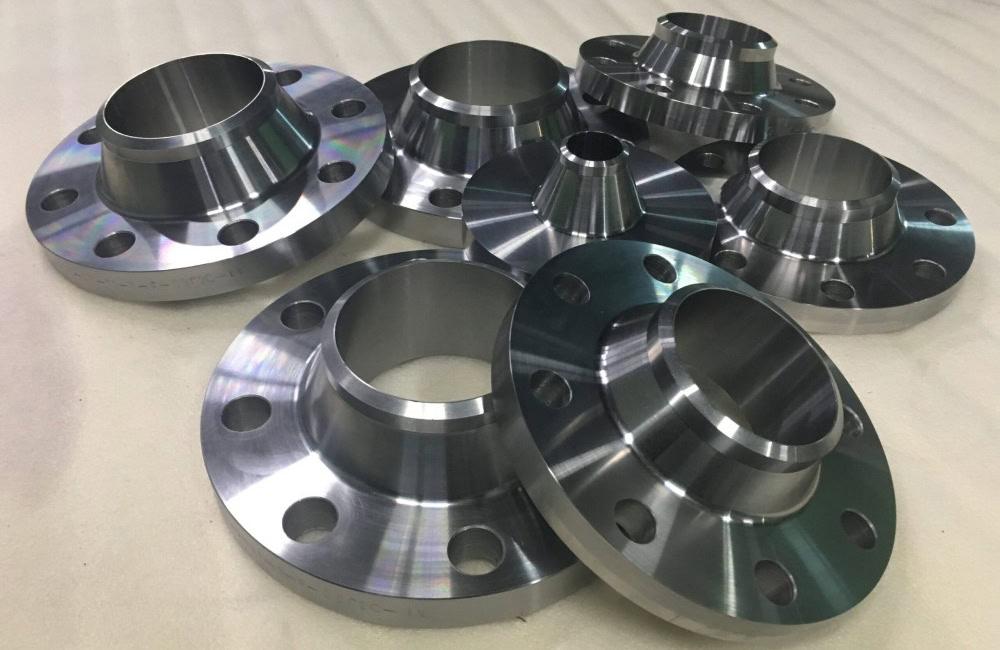
- Gr9 (Ti-3Al-2.5V)
Gr9 is a β titanium alloy with high strength (yield strength ≥ 620MPa) and low density, and is resistant to seawater and stress corrosion. It is commonly used in ship propulsion systems and offshore platform pipeline systems, and its lightweight design takes into account both strength and corrosion resistance.
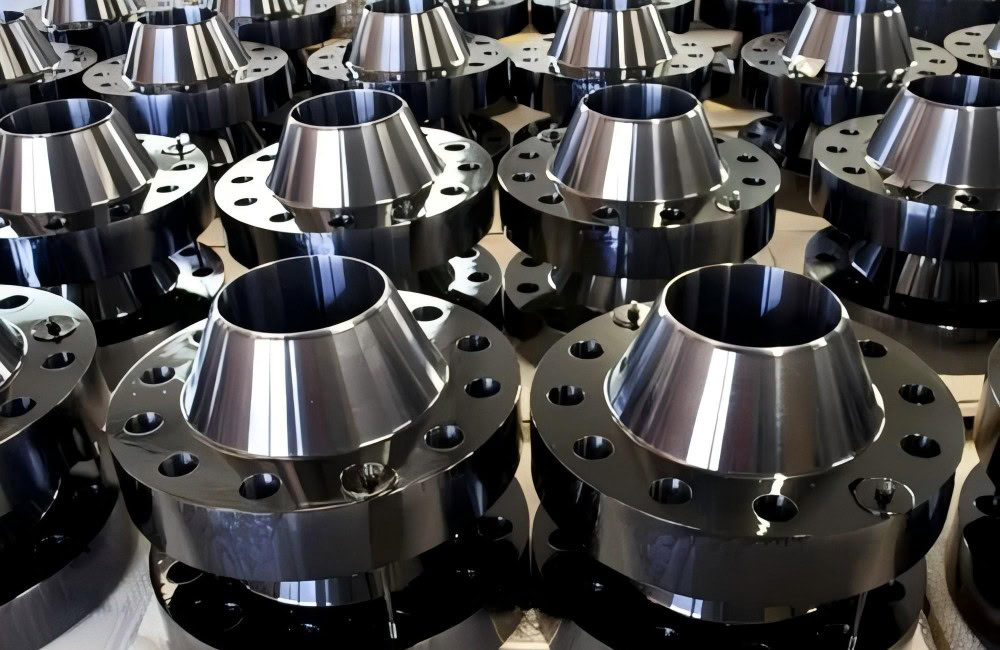
- Gr11 (Ti-0.3Mo-0.8Ni)
Gr11 contains molybdenum and nickel, and its corrosion resistance is close to Gr7, but the cost is lower. It is suitable for sulfur-containing media in petrochemical and fertilizer production, and its structure can resist H₂S stress corrosion cracking (SSCC).
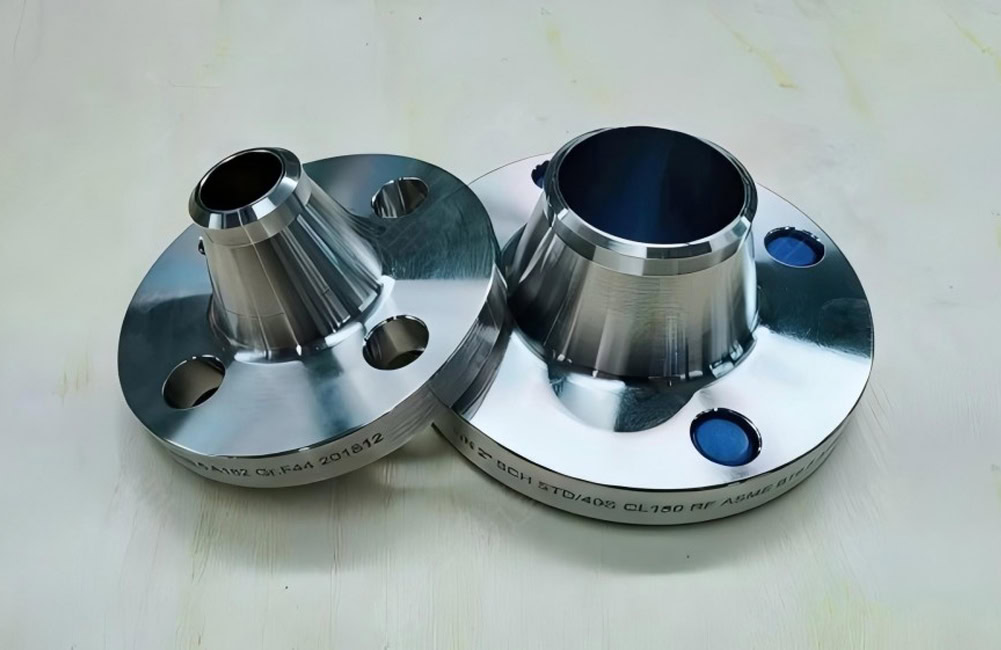
- Gr23 (Ti-6Al-4V ELI)
Gr23 is a medical grade titanium alloy with extremely low impurity content (oxygen ≤ 0.13%) and excellent biocompatibility. It is suitable for sterile pipe connections of medical equipment, and its neck design ensures sealing and cleanliness.
Manufacturing
Wstitanium uses advanced cold forging and hot forging technology. During the cold forging process, by controlling the die pressure and temperature, the material forms a dense internal structure during plastic deformation, improving the strength and wear resistance of the flange. Hot forging is suitable for the forming of large-size flanges, and eliminates internal defects of the material through grain reorganization at high temperature.
For DN6-DN600 specifications, a 3000-ton hot die forging press is used to process titanium ingots into preformed blanks at 900-1000℃. By controlling the forging rate (0.5mm/s) and the cooling gradient after forging (≤50℃/h), the problem of coarse grains is eliminated and the density of the material is improved.
Cold Precision Forging
For DN15-DN200 small-diameter flanges, the cold precision forging process is used, and the blank is secondary molded using a CNC die, with a dimensional accuracy of ±0.05mm and a surface roughness of Ra≤0.8μm.
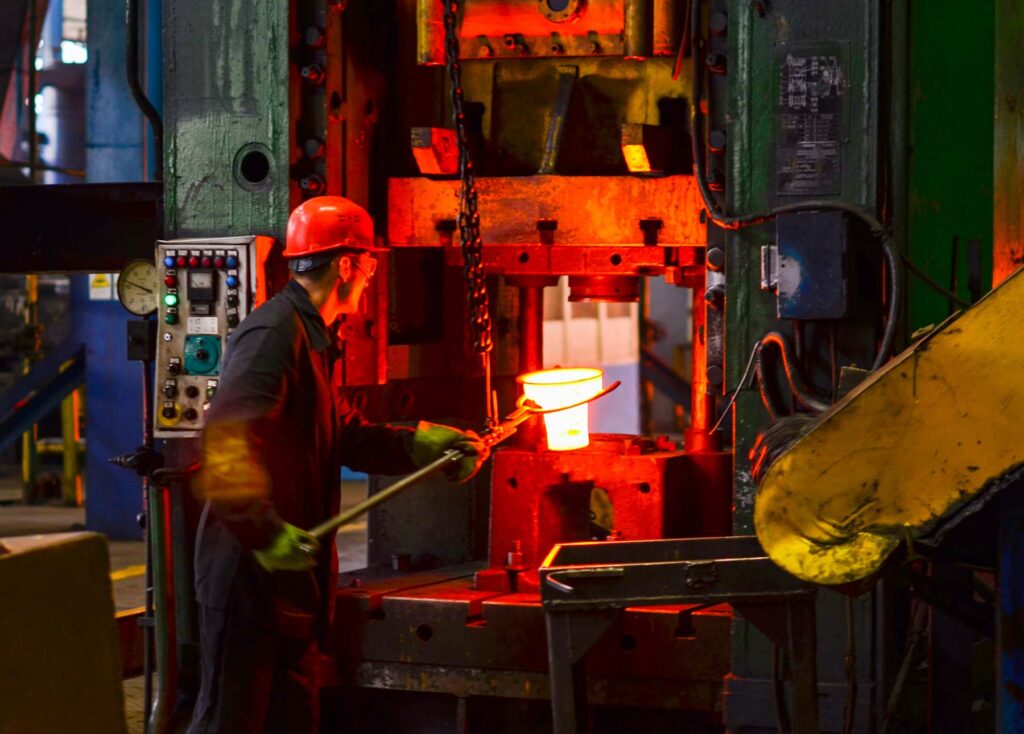
Subsequently, the internal precision HAAS CNC lathe and DMG CNC milling machine process the key parts of the flange, such as the sealing surface and bolt holes, to ensure that the dimensional accuracy reaches ±0.005mm, the flatness is ≤0.002mm, and the hole position is ≤0.01mm, meeting the strict requirements of the ASME B16.5 standard.

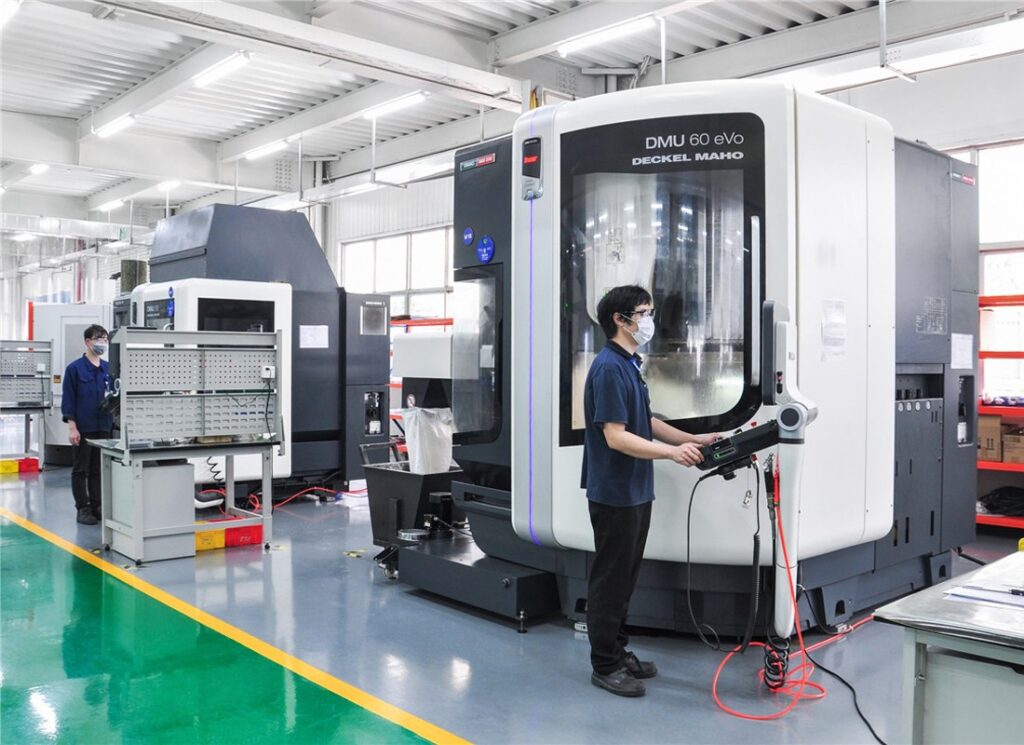
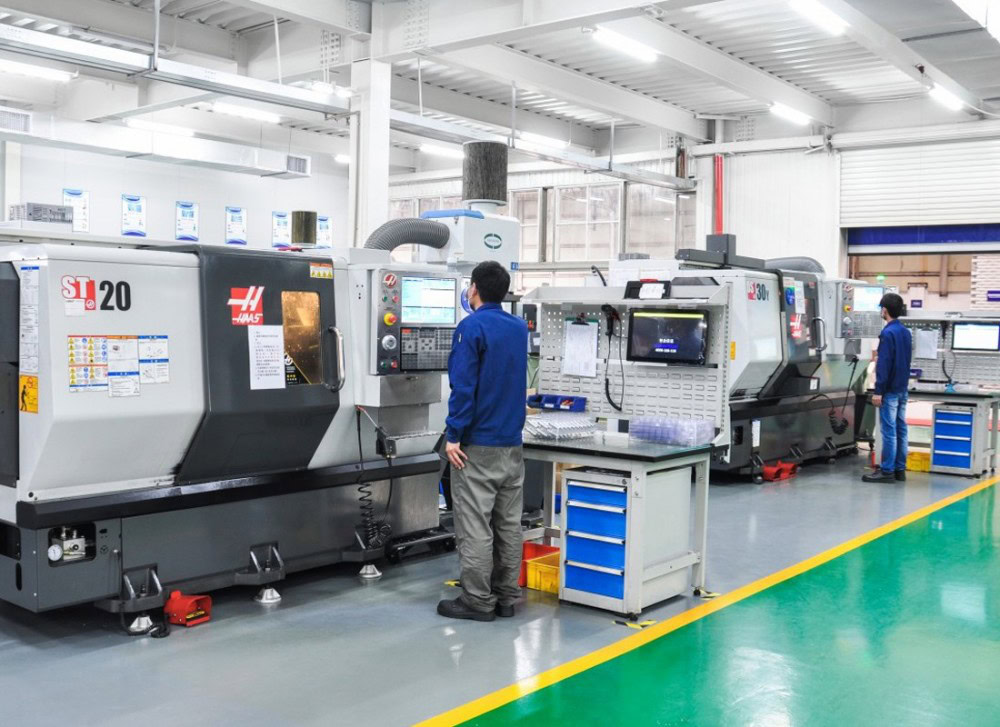
The high-precision lathe turns the forged flange, strictly controlling the key parameters such as the outer diameter, inner diameter, thickness, and neck size of the flange to ensure that the dimensional accuracy meets the design requirements. According to the characteristics of titanium and titanium alloy materials, technicians select appropriate tools and cutting parameters, such as carbide tools, and optimize cutting speed and feed rate to improve processing efficiency and surface quality, and reduce the influence of tool wear and cutting heat on material properties.
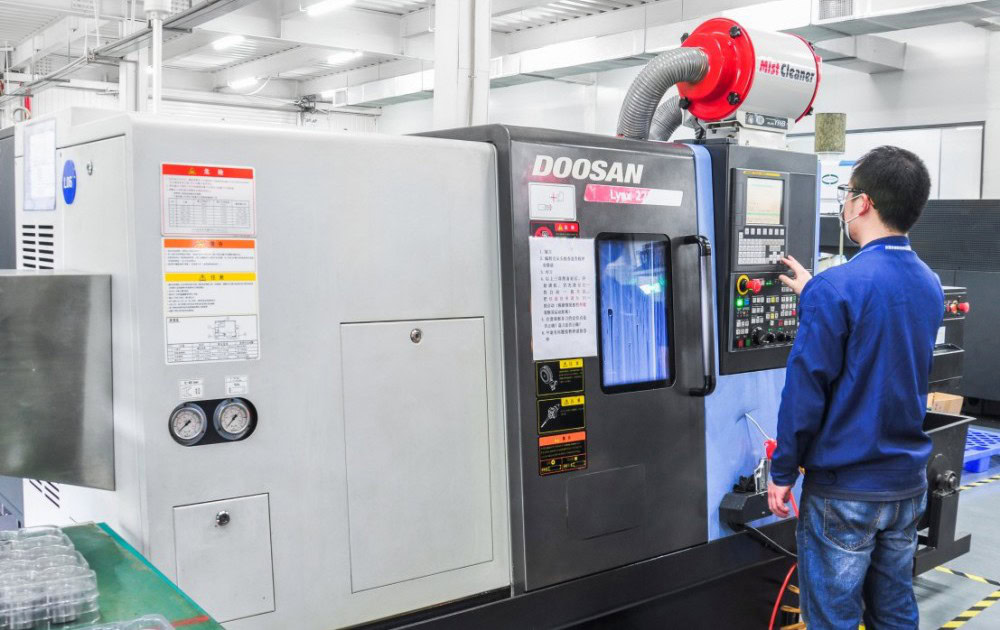
Precise CNC Drilling
CNC drilling machines are used to process bolt holes to ensure the position accuracy and dimensional accuracy of bolt holes. The application of CNC equipment makes the drilling process more accurate and efficient, ensuring that the bolt holes are evenly distributed and the hole diameters are consistent, which facilitates the subsequent installation work and ensures the accuracy and stability of the flange when connected with other components.
For different sealing surface forms, Wstitanium uses corresponding milling technology to produce flat and smooth sealing surfaces. For sealing surfaces such as concave and convex surfaces and tongue and groove surfaces, their shapes and sizes are precisely controlled to ensure the matching accuracy between the sealing surfaces. For example, when processing concave and convex sealing surfaces, the dimensional tolerances of the convex and concave surfaces are strictly controlled to make them fit tightly and achieve good sealing performance.
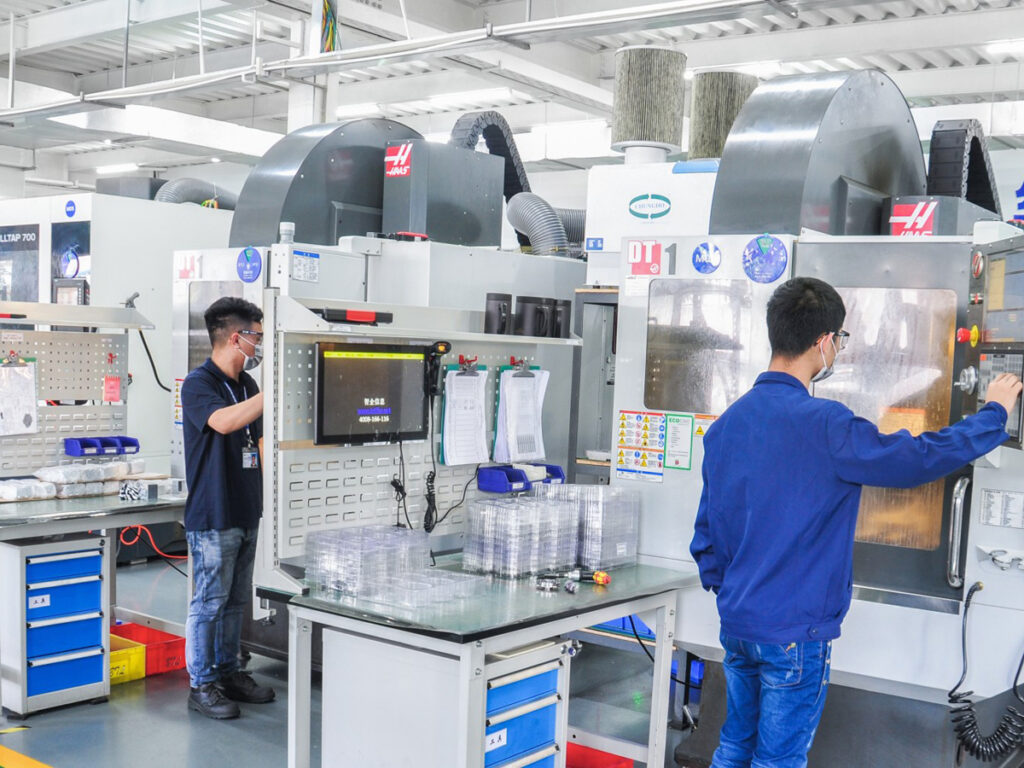
Wstitanium mainly uses argon arc welding (TIG, MIG) to connect the titanium neck butt welding flange to the pipeline. Argon arc welding can effectively protect the welding area, prevent titanium from reacting with oxygen, nitrogen and other gases in the air at high temperatures, and ensure the welding quality.
During the welding process, strictly control the welding current, voltage, welding speed, argon gas flow and other parameters. Slight changes in these parameters may have a significant impact on the quality of the weld. For example, excessive welding current can easily lead to overheating of the weld, coarse grains, and reduce the mechanical properties of the weld; too fast welding speed may cause defects such as incomplete penetration and pores in the weld.

Heat Treatment
The main purpose of heat treatment is to eliminate the residual stress generated during welding and improve the microstructure and mechanical properties of the material. Welding will cause local stress concentration inside the weldment.
These residual stresses may cause deformation and cracking of the weldment and reduce the material performance. Through heat treatment, the residual stress can be released, the material structure can be more uniform, and the toughness and corrosion resistance of the material can be improved.According to the type and welding process of titanium and titanium alloys, Wstitanium selects appropriate heat treatment processes, such as annealing and solution treatment. For neck-welded flanges made of industrial pure titanium, annealing is generally used to eliminate residual stress. For flanges made of titanium alloys, solution treatment may be required to heat the weldment to a high temperature so that the alloy elements are fully dissolved in the matrix, and then quickly cooled to obtain good comprehensive performance. During the heat treatment process, parameters such as heating rate, holding time and cooling rate are strictly controlled to ensure that the heat treatment effect meets expectations.
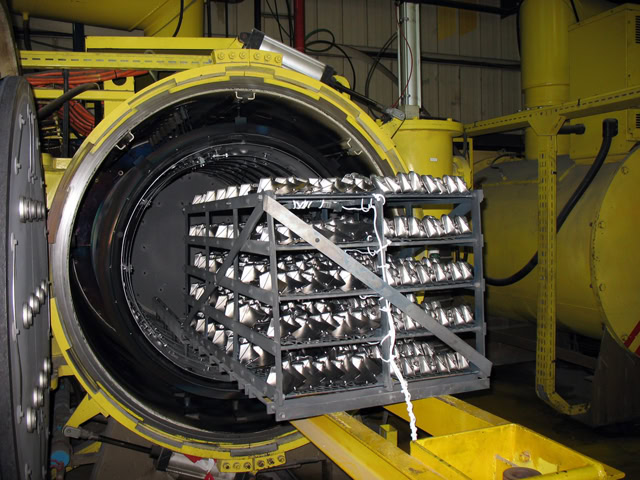
The Welding-Neck-Titanium Flange manufactured by Wstitanium plays an important role in many key fields such as petrochemical, aerospace, marine engineering, medical equipment, and electronics industry, relying on its rich and diverse titanium grades, rigorous and exquisite manufacturing technology, and comprehensive and strict quality control system.